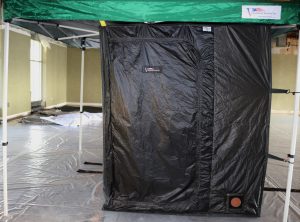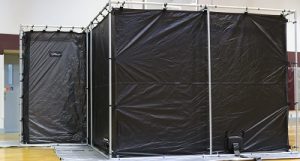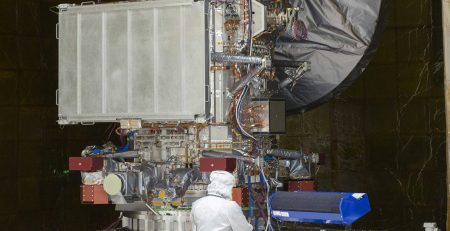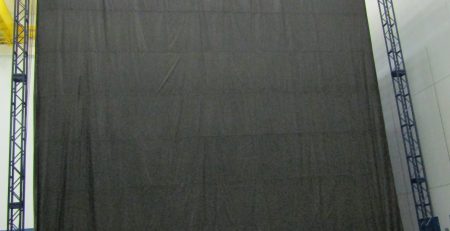Space Force Moves into a New Era, Partnering with Private Companies for Defense
The Space Force is smaller than the other military forces and will be very much more “technology dependent” in order to accomplish its mission of protecting the military on the ground by monitoring events occurring on earth from space. Much of the Space Force’s mission will be accomplished with the use of satellites. The Space Force is planning to follow the lead of NASA, by partnering with private businesses that are already involved in the aerospace field like SpaceX and Boeing. The Space Vehicles Directorate has been transferred from the Air Force to the Space Force, but will remain at Kirtland Air Force Base in New Mexico, with a reassignment of about 700 people to the Space Force.
Colonel Eric Felt states that the partnership with the Space Force and private businesses will be modeled on the same plan as NASA’s Partnerships with private businesses, which has saved NASA billions of dollars, and benefits the private sector as well. Colonel Felt feels that use of a “hybrid architecture” of commercial satellite capabilities that can be co-adapted to serve military needs at the same time. The Air Force Research Lab (AFRL) is conducting an experiment with more than 266 remote sensing private satellites with dedicated national satellites to create a much more robust system than individual systems working alone, ideally creating a win-win situation for private business and the military.
This program could also help in finding out more about and tracking the many objects present in space, an area that the military calls “Space Domain Awareness” that could have many areas of shared usage with the private sector. This would take advantage of the great systems and analytics that many commercial companies have. These “niche areas” that commercial companies have could be sold as commodities or traded to the government in a market-like basis, sparing the government the great expense of developing the technology on its own. A prime example of this would be the potential to “share missions” with companies that are placing “constellations” of small Low Earth Orbit (LEO) satellites in order to provide broad band internet connections like SpaceX’s Starlink system. The private sector could possibly host government communications systems on board their satellites. The Air Force Research Lab is launching a satellite next spring which will have Link 16 (a government encrypted radio frequency communications system used by US Military and NATO Aircrafts for communicating with ground-based vehicles), with this satellite acting as a network relay for communications based in space. This has never been possible for the government before, as they have used communications satellites in GEostationary Orbit (GEO) that are too far away from earth to be of practical use to the military in this way. If the military was able to put Link 16 on many of the satellites in LEO, they would have a continuous Link 16 communications presence everywhere and all of the time, much better than ground based systems that are essentially line of sight.
This really comes into play as a part of an Advanced Battle Management System (ABMS) which is the use of sensors to evaluate battle situations when troops are in action on the ground. Traditionally, these sensors were transported on large military aircraft being used as Command and Control Posts. The disadvantage of this is that these planes are large and have to fly low over enemy territory, where they run the risk of being shot down with personnel in the air and on the ground and expensive equipment being casualties. Use of LEO satellites, with their high speed low latency communications systems, would eliminate putting humans and equipment in jeopardy while providing the necessary fluid information transfer for the troops on the ground.
These are just a few of the possibilities of future shared efforts between commercial companies and the Space Force. It seems like there will be a lot of technical work available that will have to meet strict military standards like DO-160 and MIL-STD 461. Both of these standards involve both emission and susceptibility to RF interference by the device. Certainly, shielding against outside emissions is going to be important inside relatively small space vehicles with many electronic components working simultaneously in close quarters. Likewise, preventing the device to emit RF interference that would decrease the performance of nearby components is very important.
V Technical Textiles, Inc. supplies many metalized conductive textiles that provide excellent shielding properties at very small thickness extremely light weight, both of which are good attributes in space!
If you would like to do your own pre-compliance testing V Technical Textiles, Inc. also provides RF Shielded Testing Enclosures to meet your testing needs. We have standard sizes, but many of our RF Shielded Testing Enclosures are custom designed to our customer’s needs and specifications. Our Reverberation Chamber is particularly useful in testing for emissions and susceptibility. Please contact us for more information on these unique materials and testing enclosures!
V Technical Textiles, Inc.
www.vtechtextiles.com
info@vetechtextiles.com
(315)-597-1674 PHONE
(315)-597-6687 FAX
















Leave a Reply